Experimental and Computational Studies on the Interaction of a Dansyl-Based Fluorescent Schiff Base Ligand with Cu2+ Ions and CuO NPs
Abstract
:1. Introduction
2. Results and Discussion
2.1. Crystal Structures for H3L and DsA
2.2. Electronic and Vibrational Spectra of H3L and DsA
2.3. Experimental and Theoretical Studies on the Copper(II) Complex
2.4. Investigations on the Interaction of H3L with CuO NPs
2.4.1. Spectrofluorimetry
2.4.2. Attenuated Total Reflection-Infrared Spectroscopy
2.4.3. Micro-X-ray Fluorescence
2.4.4. Scanning Electron Microscopy-Energy Dispersive X-ray Spectroscopy
2.4.5. DFT Studies
2.5. Fluorescence Emission Studies on H3L upon Addition of CuO NPs
3. Materials and Methods
3.1. Sample Preparation
3.2. Crystal Structure Analysis Data
3.3. Computational Methods
3.4. Synthesis and Characterization of Compounds
3.4.1. DsA
3.4.2. H3L
3.4.3. Cu2(HL)2(H2O)4·10H2O
4. Conclusions
Supplementary Materials
Author Contributions
Funding
Institutional Review Board Statement
Informed Consent Statement
Data Availability Statement
Acknowledgments
Conflicts of Interest
References
- Siddiqi, K.S.; Husen, A. Current status of plant metabolite-based fabrication of copper/copper oxide nanoparticles and their applications: A review. Biomater. Res. 2020, 24, 11. [Google Scholar] [CrossRef] [PubMed]
- Grigore, M.E.; Biscu, E.R.; Holban, A.M.; Gestal, M.C.; Grumezescu, A.M. Methods of Synthesis, Properties and Biomedical Applications of CuO Nanoparticles. Pharmaceuticals 2016, 9, 75. [Google Scholar] [CrossRef] [PubMed]
- Gawande, M.B.; Goswami, A.; Felpin, F.X.; Asefa, T.; Huang, X.; Silva, R.; Zou, X.; Zboril, R.; Varma, R.S. Cu-Based Nanoparticles: Synthesis and Applications in Catalysis. Chem. Rev. 2016, 116, 3722–3811. [Google Scholar] [CrossRef]
- Ighalo, J.O.; Sagboye, P.A.; Umenweke, G.; Ajala, O.J.; Omoarukhe, F.O.; Adeyanju, C.A.; Ogunniyi, S.; Adeniyi, A.G. CuO nanoparticles (CuO NPs) for water treatment: A review of recent advances. Environ. Nanotechnol. Monit. Manag. 2021, 15, 100443. [Google Scholar] [CrossRef]
- Cuong, H.N.; Pansambal, S.; Ghotekar, S.; Oza, R.; Hai, N.T.T.; Viet, N.M.; Nguyen, V.-H. New frontiers in the plant extract mediated biosynthesis of copper oxide (CuO) nanoparticles and their potential applications: A review. Environ. Res. 2022, 203, 111858. [Google Scholar] [CrossRef]
- Karlsson, H.L.; Toprak, M.S.; Fadeel, B. Toxicity of metal and metal oxide nanoparticles. In Handbook on the Toxicology of Metals, 5th ed; Nordberg, G.F., Costa, M., Eds.; Academic Press: Cambridge, MA, USA, 2022; pp. 87–126. ISBN 9780128232927. [Google Scholar] [CrossRef]
- Rajput, V.; Minkina, T.; Ahmed, B.; Sushkova, S.; Singh, R.; Soldatov, M.; Laratte, B.; Fedorenko, A.; Mandzhieva, S.; Blicharska, E.; et al. Interaction of Copper-Based Nanoparticles to Soil, Terrestrial, and Aquatic Systems: Critical Review of the State of the Science and Future Perspectives. Rev. Environ. Contam. Toxicol. 2020, 252, 51–96. [Google Scholar] [CrossRef]
- Rotini, A.; Gallo, A.; Parlapiano, I.; Berducci, M.T.; Boni, R.; Tosti, E.; Prato, E.; Maggi, V.; Cicero, A.M.; Migliore, L.; et al. Insights into the CuO nanoparticle ecotoxicity with suitable marine model species. Ecotoxicol. Environ. Saf. 2018, 147, 852–860. [Google Scholar] [CrossRef]
- Croteau, M.-N.; Misra, S.K.; Luoma, S.N.; Valsami-Jones, E. Bioaccumulation and toxicity of CuO nanoparticles by a freshwater invertebrate after waterborne and dietborne exposures. Environ. Sci. Technol. 2014, 48, 10929–10937. [Google Scholar] [CrossRef]
- Wu, F.; Harper, B.J.; Crandon, L.E.; Harper, S.L. Assessment of Cu and CuO nanoparticle ecological responses using laboratory small-scale microcosms. Environ. Sci. Nano 2020, 7, 105–115. [Google Scholar] [CrossRef]
- Assadian, E.; Zarei, M.H.; Gilani, A.G.; Farshin, M.; Degampanah, H.; Pourahmad, J. Toxicity of Copper Oxide (CuO) Nanoparticles on Human Blood Lymphocytes. Biol. Trace Elem. Res. 2018, 184, 350–357. [Google Scholar] [CrossRef]
- Naz, S.; Gul, A.; Zia, M. Toxicity of copper oxide nanoparticles: A review study. IET Nanobiotechnol. 2020, 14, 1–13. [Google Scholar] [CrossRef] [PubMed]
- Navarro-Pacheco, N.I.; Roubalova, R.; Dvorak, J.; Benada, O.; Pinkas, D.; Kofronova, O.; Semerad, J.; Pivokonsky, M.; Cajthaml, T.; Bileja, M.; et al. Understanding the toxicity mechanism of CuO nanoparticles: The intracellular view of exposed earthworm cells. Environ. Sci. Nano 2021, 8, 2464–2477. [Google Scholar] [CrossRef]
- Zhao, J.; Ren, W.; Dai, Y.; Liu, L.; Wang, Z.; Yu, X.; Zhang, J.; Wang, X.; Xing, B. Uptake, distribution, and transformation of CuO NPs in a floating plant Eichhornia crassipes and related stomatal responses. Environ. Sci. Technol. 2017, 51, 7686–7695. [Google Scholar] [CrossRef] [PubMed]
- Peng, C.; Xu, C.; Liu, Q.; Sun, L.; Luo, Y.; Shi, J. Fate and transformation of CuO nanoparticles in the soil–rice system during the life cycle of rice plants. Environ. Sci. Technol. 2017, 51, 4907–4917. [Google Scholar] [CrossRef]
- Navratilova, J.; Praetorius, A.; Gondikas, A.; Fabienke, W.; Kammer, F.V.D.; Hofmann, T. Detection of Engineered Copper Nanoparticles in Soil Using Single Particle ICP-MS. Int. J. Environ. Res. Public Health 2015, 12, 15756–15768. [Google Scholar] [CrossRef]
- Sanmartín-Matalobos, J.; García-Deibe, A.M.; Fondo, M.; Zarepour-Jevinani, M.; Domínguez-González, M.R.; Bermejo-Barrera, P. Exploration of an easily synthesized fluorescent probe for detecting copper in aqueous samples. Dalton Trans. 2017, 46, 15827–15835. [Google Scholar] [CrossRef]
- Sanmartín-Matalobos, J.; García-Deibe, A.M.; Zarepour-Jevinani, M.; Aboal-Somoza, M.; Bermejo-Barrera, P.; Fondo, M. Exploring the Chelating Potential of an Easily Synthesized Schiff Base for Copper Sensing. Crystals 2020, 10, 235. [Google Scholar] [CrossRef]
- Sanmartín-Matalobos, J.; Bermejo-Barrera, P.; Alves-Iglesias, Y.; García-Deibe, A.M.; Fondo, M. Synthesis and Characterization of a Dansyl-Based Fluorescent Probe for Analytical Purposes. Chem. Proc. 2022, 8, 76. [Google Scholar] [CrossRef]
- Ahumada, M.; Lazurko, C.; Alarcon, E.I. Fundamental concepts on surface chemistry of nanomaterials. In Photoactive Inorganic Nanoparticles. Micro and Nano Technologies; Pérez Prieto, J., González Béjar, M., Eds.; Elsevier: Amsterdam, The Netherlands, 2019; pp. 1–19. [Google Scholar] [CrossRef]
- Owen, J.S. The coordination chemistry of nanocrystal surfaces. Science 2015, 347, 615–616. [Google Scholar] [CrossRef]
- De Roo, J.; De Keukeleere, K.; Hens, Z.; Van Driessche, I. From ligands to binding motifs and beyond; the enhanced versatility of nanocrystal surfaces. Dalton Trans. 2016, 45, 13277–13283. [Google Scholar] [CrossRef]
- Liu, P.; Qin, R.; Fu, G.; Zheng, N. Surface Coordination Chemistry of Metal Nanomaterials. J. Am. Chem Soc. 2017, 139, 2122–2131. [Google Scholar] [CrossRef] [PubMed]
- Srivastava, P.; Ali, R.; Razi, S.S.; Shahid, M.; Patnaik, S.; Misra, A. A simple blue fluorescent probe to detect Hg2+ in semiaqueous environment by intramolecular charge transfer mechanism. Tetrah. Lett. 2013, 54, 3688–3693. [Google Scholar] [CrossRef]
- Bhatt, P.; Govender, T.; Krugera, H.G.; Maguire, G.E.M. N-Benzyl-5-(di-methyl-amino)-naphthalene-1-sulfonamide. Acta Cryst. 2011, E67, o2458–o2459. [Google Scholar] [CrossRef]
- Qiu, L.; Jiang, P.; He, W.; Tu, C.; Lin, J.; Li, Y.; Gao, X.; Guo, Z. Structural and fluorescent study of zinc complexes of dansyl aminoquinoline. Inorg. Chim. Acta 2007, 360, 431–438. [Google Scholar] [CrossRef]
- Zhou, S.; Zhou, Z.-Q.; Zhao, X.-X.; Xiao, Y.-H.; Xi, G.; Liu, J.-T.; Zhao, B.-X. A dansyl based fluorescence chemosensor for Hg2+ and its application in the complicated environment samples. Spectrochim. Acta A Mol. Biomol. Spectrosc. 2015, 148, 348–354. [Google Scholar] [CrossRef]
- Patrascu, B.; Mocanu, S.; Coman, A.; Madalan, A.M.; Popescu, C.; Paun, A.; Matache, M.; Ionita, P. Synthesis of Fluorescent Dansyl Derivatives of Methoxyamine and Diphenylhydrazine as Free Radical Precursors. Int. J. Mol. Sci. 2020, 21, 3559. [Google Scholar] [CrossRef]
- Celedón, S.; Roisnel, T.; Artigas, V.; Fuentealba, M.; Carrillo, D.; Ledoux-Rak, I.; Hamon, J.-R.; Manzur, C. Palladium(II) complexes of tetradentate donor–acceptor Schiff base ligands: Synthesis and spectral, structural, thermal and NLO properties. New J. Chem. 2020, 44, 9190–9201. [Google Scholar] [CrossRef]
- Fondo, M.; Doejo, J.; García-Deibe, A.M.; Sanmartín-Matalobos, J.; Vicente, R. A Ni8 metallacalix[4]arene and a Cu4 molecular rhomboid: Limiting the nuclearity of carboxysalen-like metal complexes. CrystEngComm 2016, 35, 6673–6682. [Google Scholar] [CrossRef]
- Fondo, M.; Doejo, J.; García-Deibe, A.M.; Ocampo, N.; Sanmartín, J. Carboxylic decorated Schiff base complexes as metallotectons for hydrogen bonded 3D networks. Polyhedron 2015, 101, 78–85. [Google Scholar] [CrossRef]
- Sanmartín, J.; Novio, F.; García-Deibe, A.M.; Fondo, M.; Bermejo, M.R. Trimorphism of an asymmetric disulfonamide Schiff base. New J. Chem. 2007, 31, 1605–1612. [Google Scholar] [CrossRef]
- Sanmartín-Matalobos, J.; Portela-García, C.; Fondo, M.; García-Deibe, A.M.; Llamas-Saiz, A.L. A simple route to dinuclear complexes containing unusual μ-Nsulfonamido bridges. J. Coord. Chem. 2016, 69, 1358–1370. [Google Scholar] [CrossRef]
- Sanmartín, J.; Novio, F.; García-Deibe, A.M.; Fondo, M.; Ocampo, N.; Bermejo, M.R. Dimeric Complexes of a Tridentate Schiff Base Ligand–Crystal Structure of a CuII Complex with Uncommon μ2-Nsulfonamido Bridges and Ferromagnetic Behaviour. Eur. J. Inorg. Chem. 2008, 2008, 1719–1726. [Google Scholar] [CrossRef]
- Blasco, S.; Burguete, M.I.; Clares, M.P.; García-España, E.; Escorihuela, J.; Luis, S.V. Coordination of Cu2+ ions to C2 symmetric pseudopeptides derived from valine. Inorg. Chem. 2010, 49, 7841–7852. [Google Scholar] [CrossRef] [PubMed]
- Alves, J.Q.; Máximo, L.N.C.; Franco, L.P.; Silva, R.S.D.; Oliveira, M.F.D. Fluorescence-quenching CdTe quantum dots applied for identification of cocaine-structure analogues. Anal. Methods 2019, 11, 185–191. [Google Scholar] [CrossRef]
- Lakowicz, J.R. Principles of Fluorescence Spectroscopy, 3rd ed.; Springer: Baltimore, MD, USA, 2006. [Google Scholar]
- Moeno, S.; Nyokong, T. Opposing responses elicited by positively charged phthalocyanines in the presence of CdTe quantum dots. J. Photochem. Photobiol. A 2009, 201, 228–236. [Google Scholar] [CrossRef]
- Frisch, M.J.; Trucks, G.W.; Schlegel, H.B.; Scuseria, G.E.; Robb, M.A.; Cheeseman, J.R.; Scalmani, G.; Barone, V.; Petersson, G.A.; Nakatsuji, H.; et al. Gaussian 09, Revision, A.02; Gaussian Inc.: Wallingford, CT, USA, 2016. [Google Scholar]
- Sheldrick, G.M. SADABS, Area-Detector Absorption Correction; Siemens Industrial Automation, Inc.: Madison, WI, USA, 2001. [Google Scholar]
- Sheldrick, G.M. SHELXT—Integrated space-group and crystal-structure determination. Acta Crystallogr. Sect. A Found. Adv. 2015, 71, 3–8. [Google Scholar] [CrossRef]
- Sheldrick, G.M. Crystal structure refinement with SHELXL. Acta Crystallogr. Sect. C Struct. Chem. 2015, 71, 3–8. [Google Scholar] [CrossRef]
- Martin, R.L. Natural transition orbitals. J. Chem. Phys. 2003, 118, 4775–4777. [Google Scholar] [CrossRef]
- Glendening, E.D.; Badenhoop, J.K.; Reed, A.E.; Carpenter, J.E.; Bohmann, J.A.; Morales, C.M.; Karafiloglou, P.; Landis, C.R.; Weinhold, F. NBO 7.0; Theoretical Chemistry Institute, University of Wisconsin: Madison, WI, USA, 2018. [Google Scholar]
- Edwards, P.J.; Martina, S.L.X.; Andrews, M.J.I.; Bar, G.L.J.; Allart, B.; Burritt, A.; Tao, X.; Kroll, F.E.K. Imidazolopyridine Compounds Useful for the Treatment of Degenerative and Inflammatory Diseases. PCT/EP2007/063108, 5 June 2008. [Google Scholar]

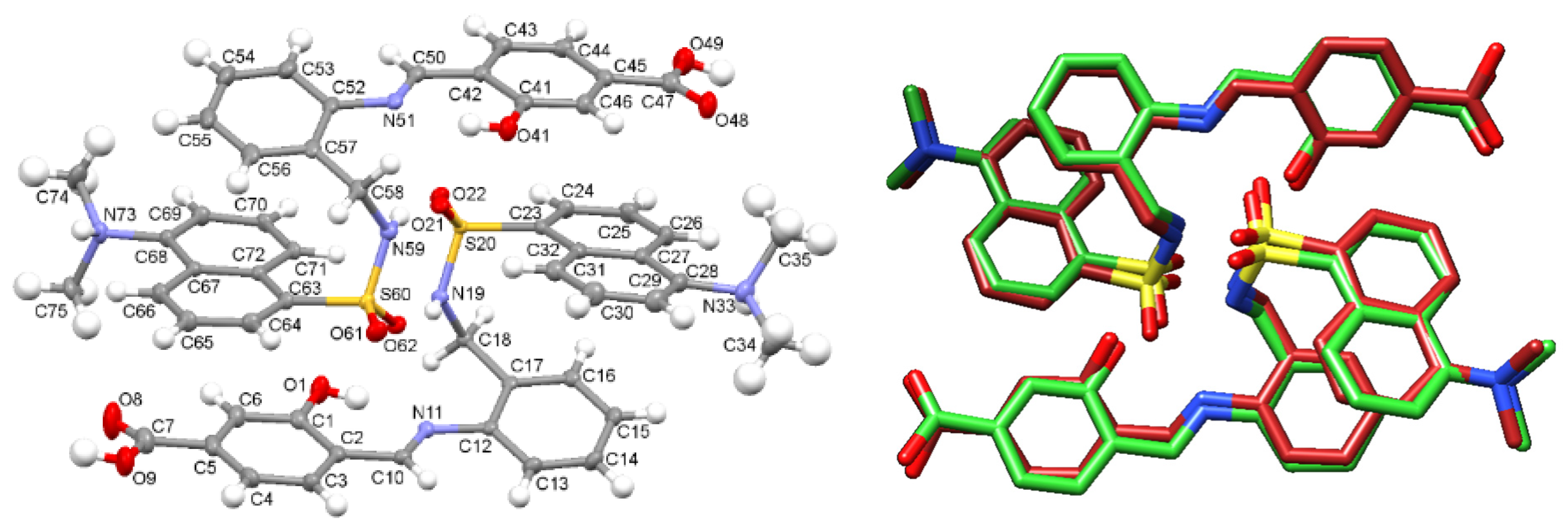

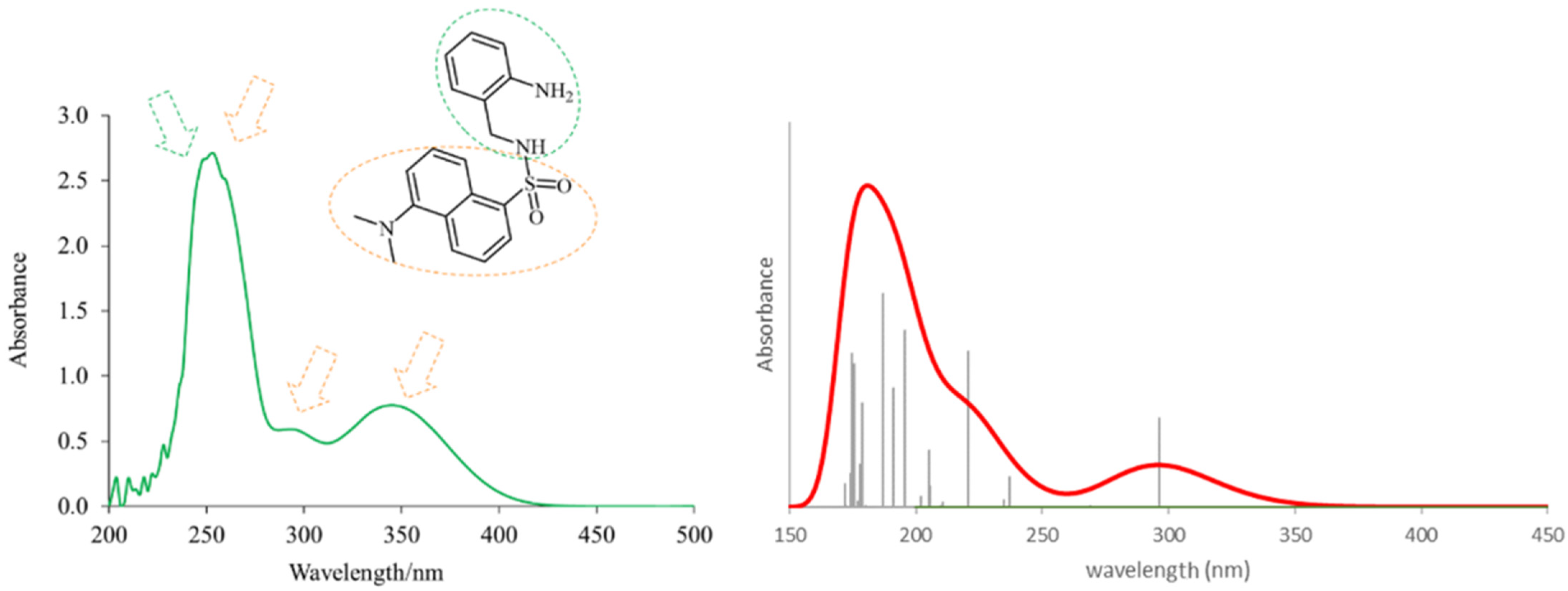
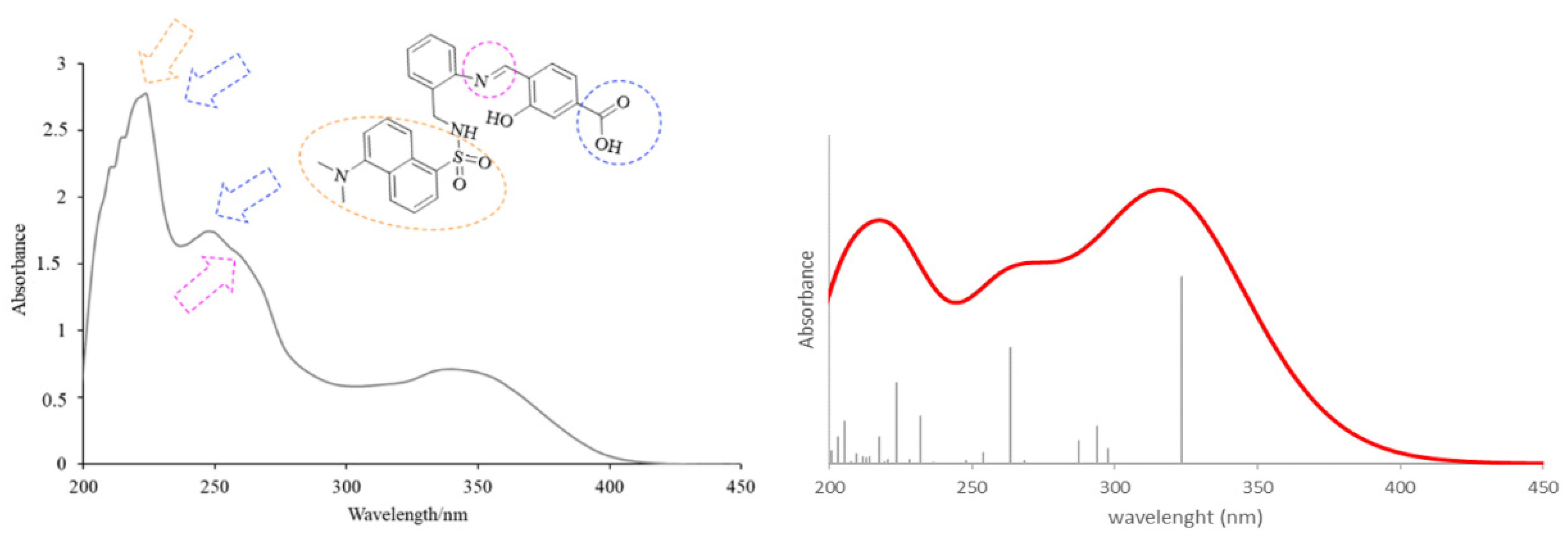
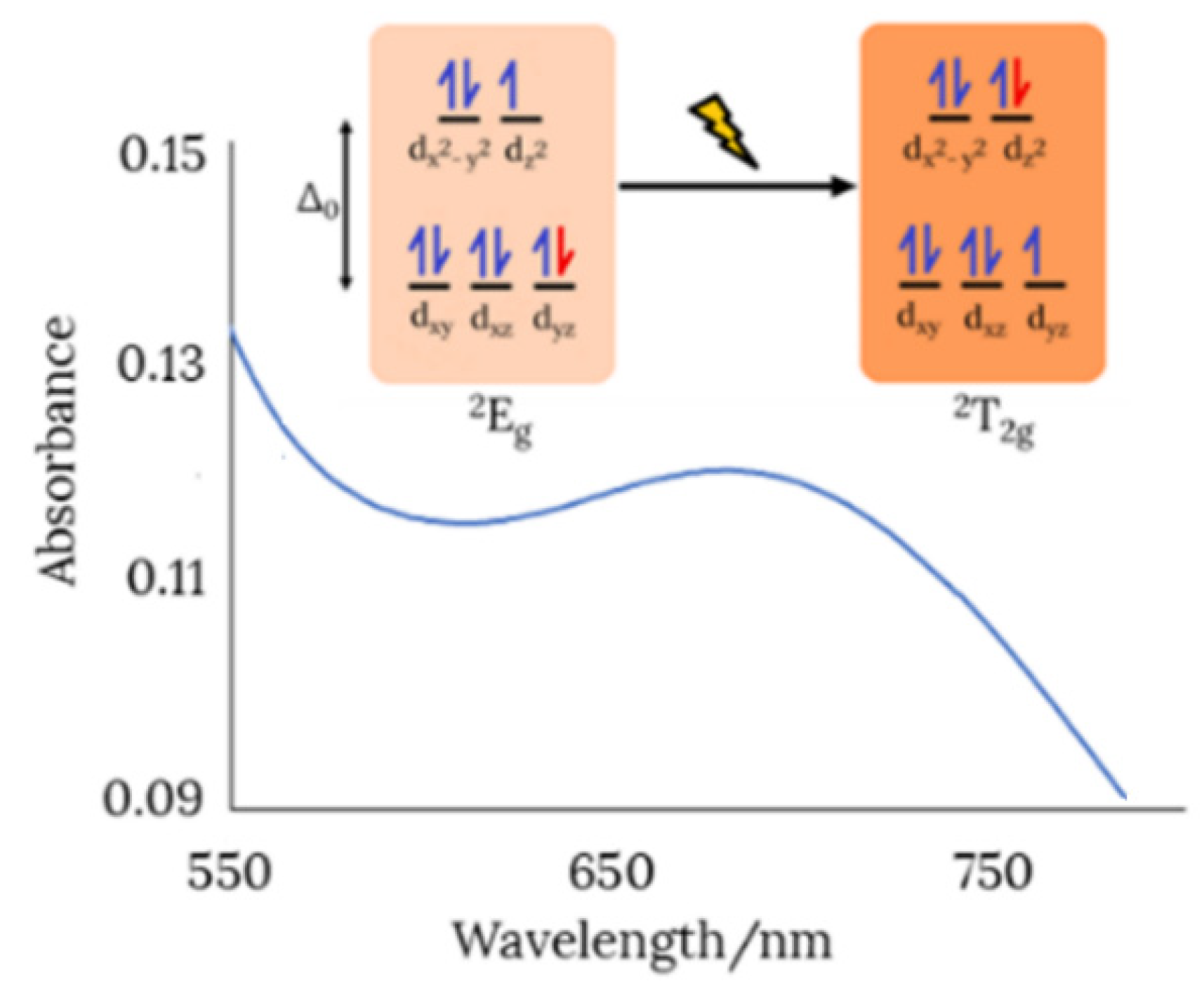

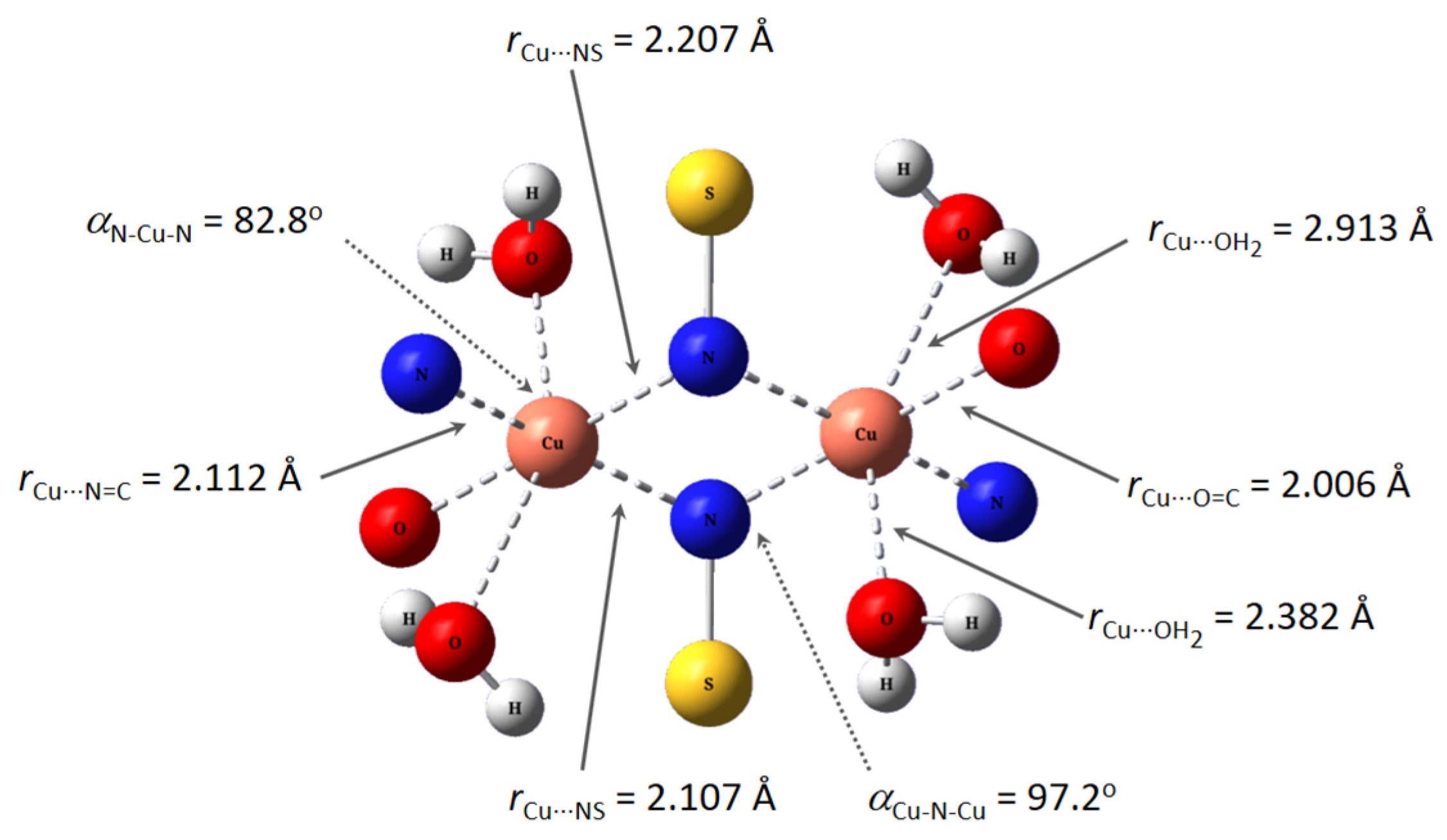

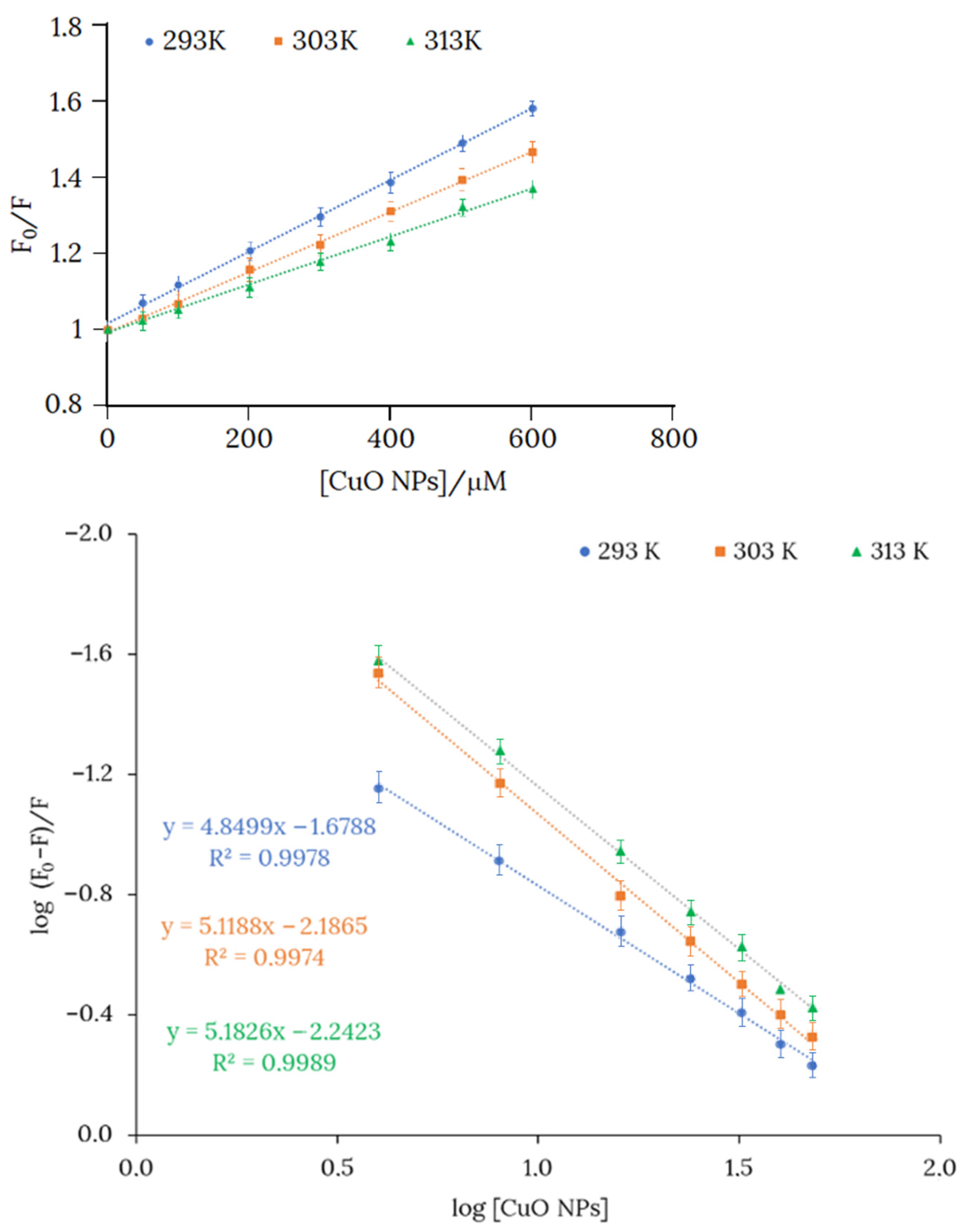
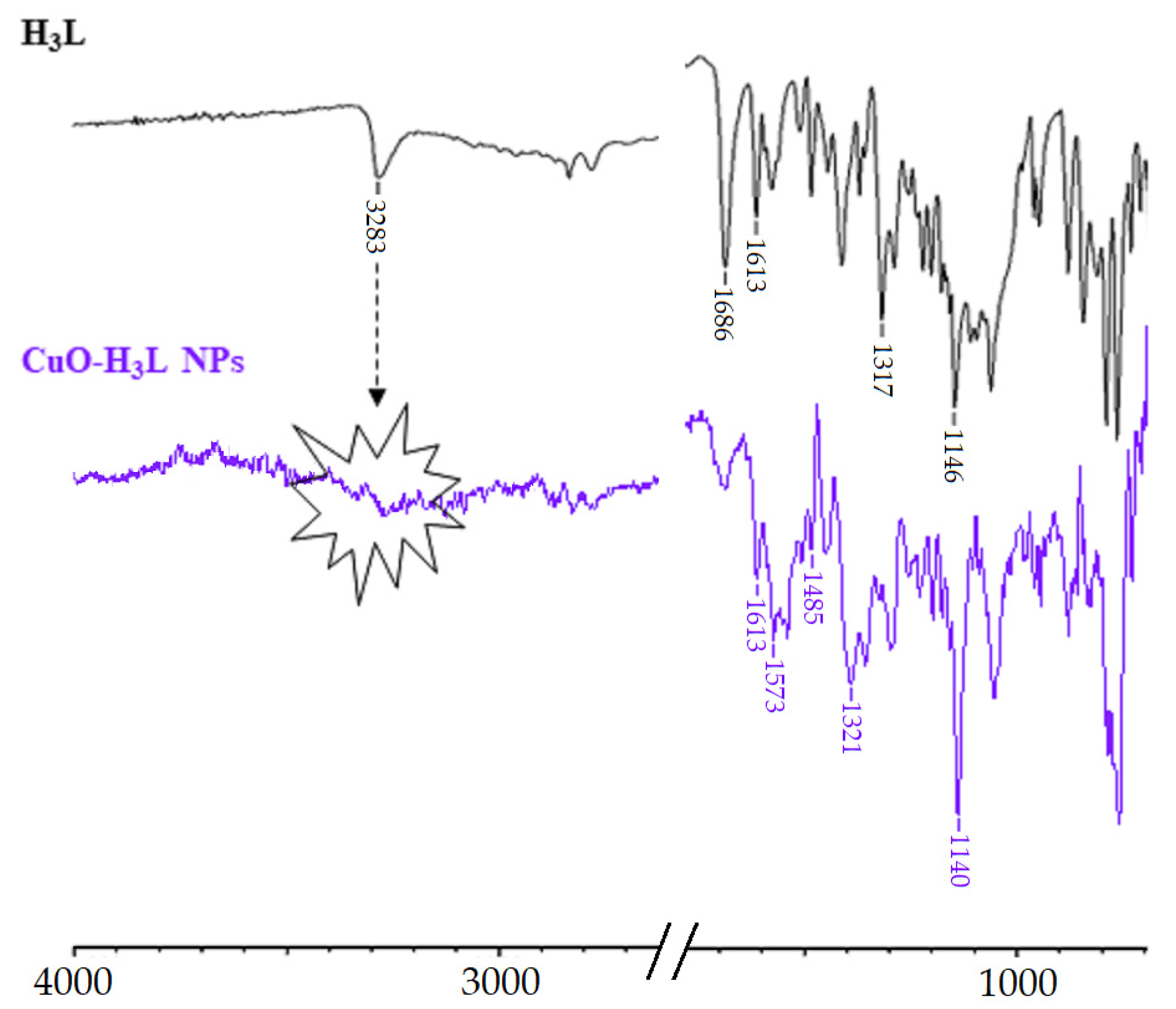
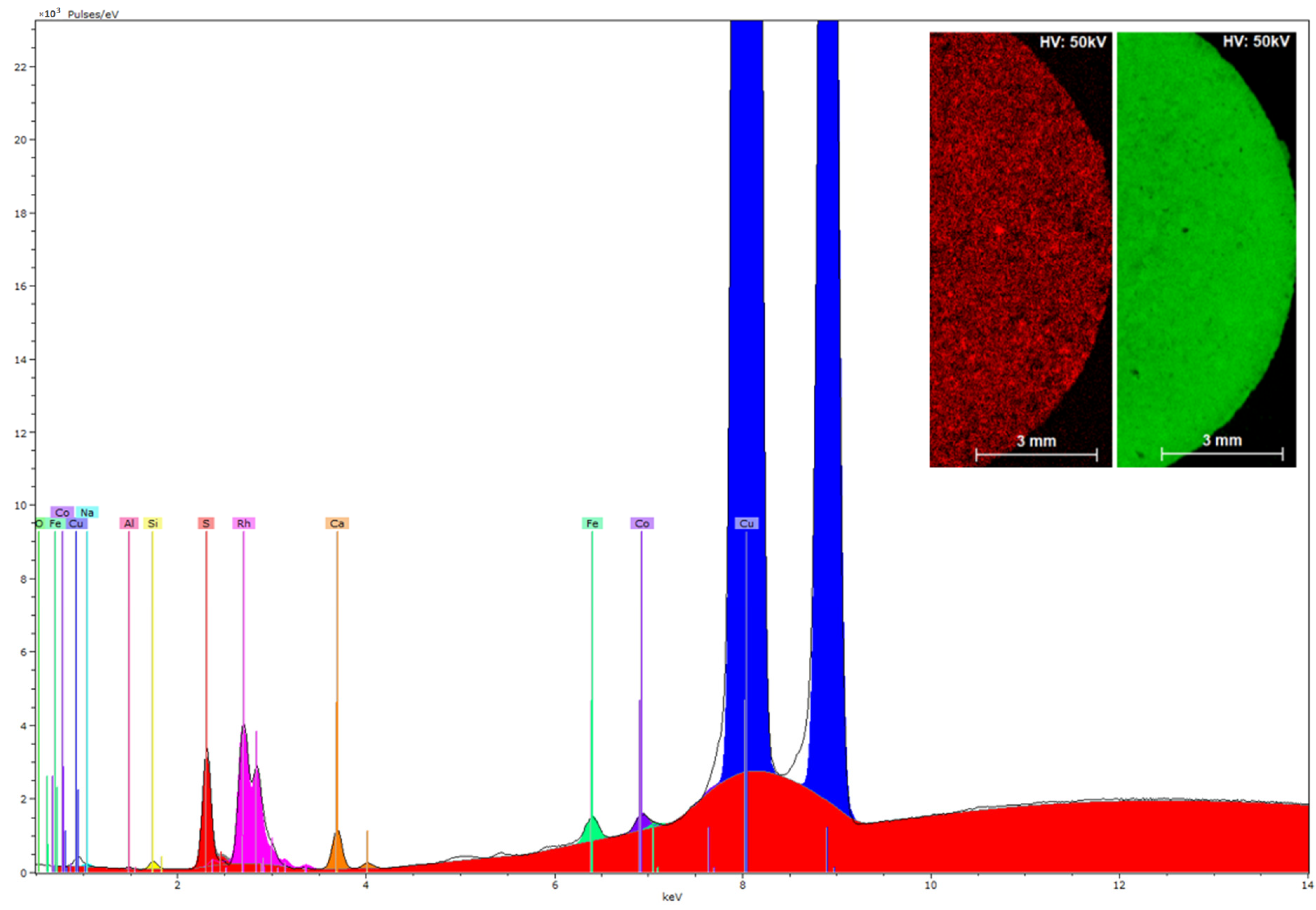
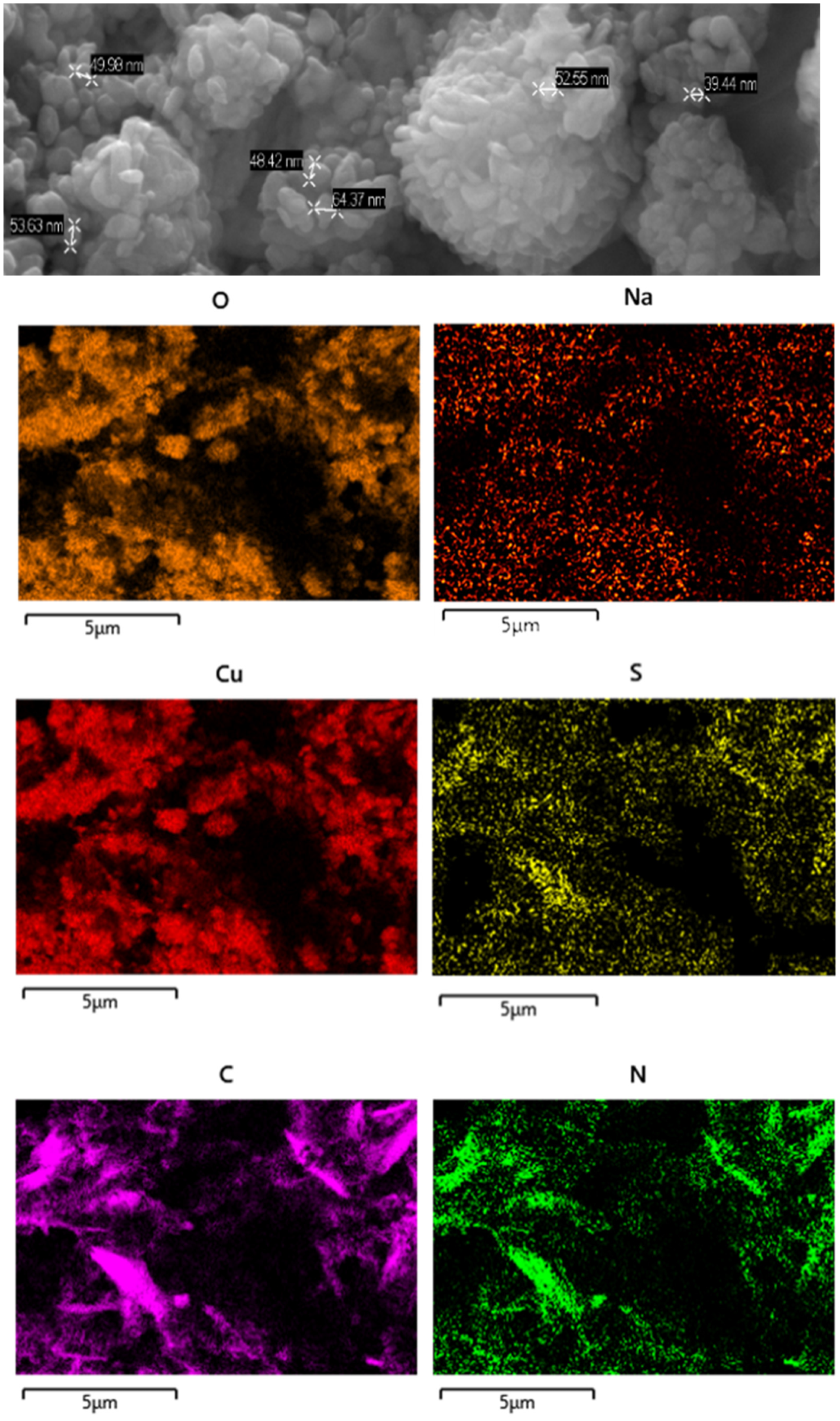
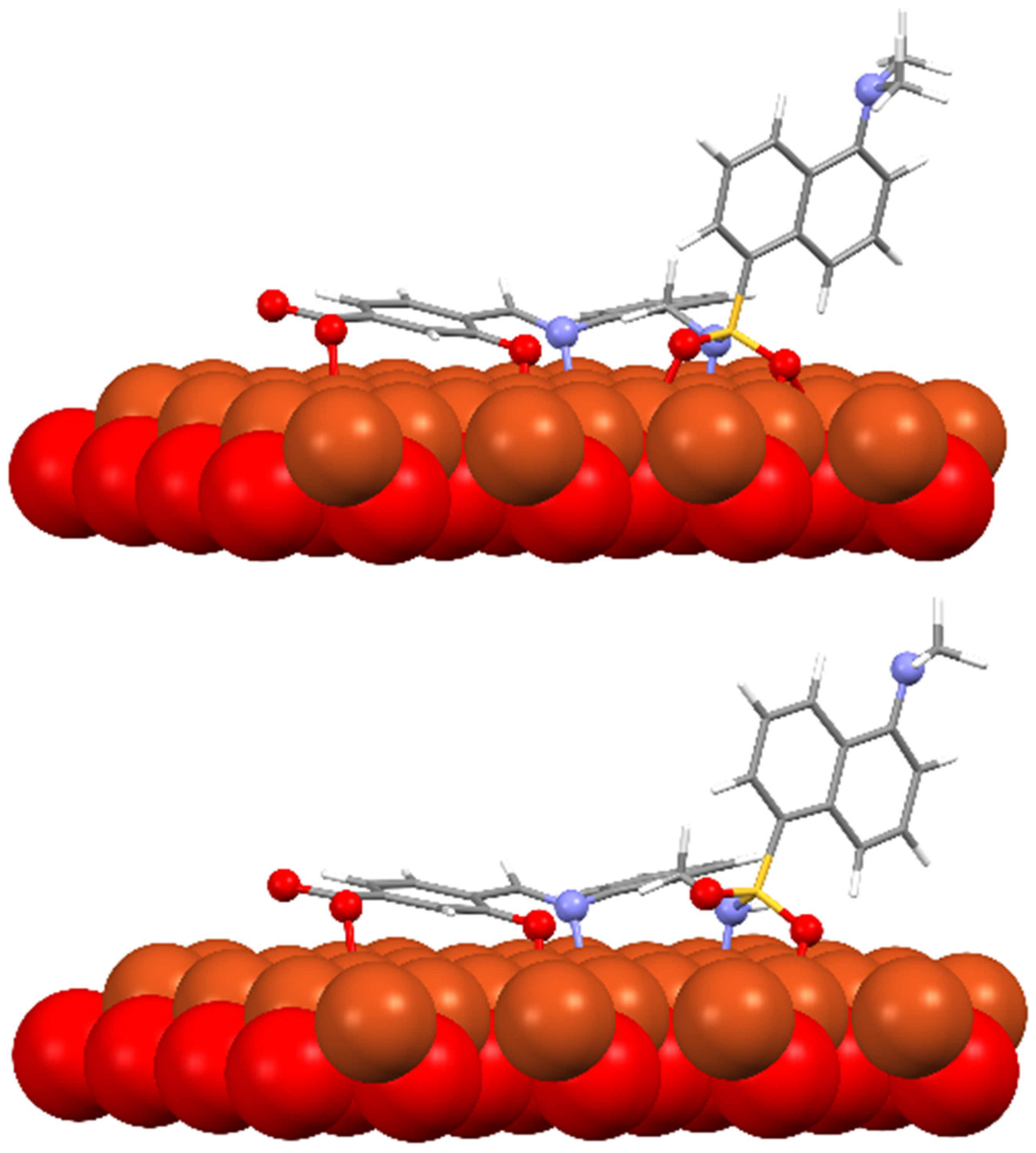


| Wavelength (nm) | Oscillator Strength | Molecular Orbitals | Natural Transition Orbitals a | |||
|---|---|---|---|---|---|---|
| 296.2 | (0.1719) | HOMO-1 → LUMO | 95.9% | 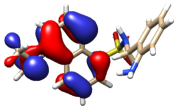 |  | (96%) |
| 220.8 | (0.3030) | HOMO-1 → LUMO+1 HOMO-4 → LUMO HOMO-3 → LUMO+1 HOMO-3 → LUMO | 38.3% 31.9% 13.1% 7.5% |  |  | (56%) |
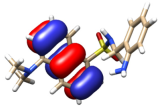 | 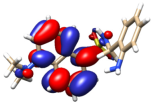 | (39%) | ||||
| 195.8 | (0.3430) | HOMO-3 → LUMO+1 HOMO-6 → LUMO HOMO-4 → LUMO | 46.3% 25.2% 9.3% | 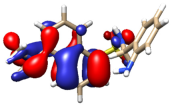 | 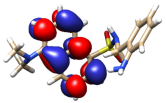 | (50%) |
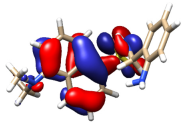 | 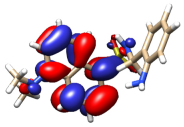 | (37%) | ||||
| 187.1 | (0.4146) | HOMO-4 → LUMO+1 HOMO-3 → LUMO+1 HOMO-1 → LUMO+3 | 73.4% 8.8% 6.2% | 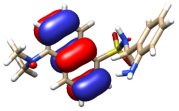 | 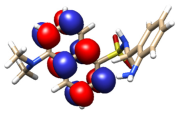 | (83%) |
| 174.6 | (0.2974) | HOMO-2 →LUMO+2 HOMO → LUMO+4 HOMO → LUMO+5 HOMO-8 → LUMO | 55.4% 9.0% 7.7% 7.1% | 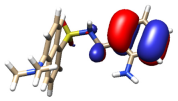 |  | (55%) |
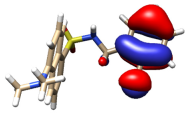 | 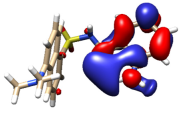 | (18%) | ||||
| Wavelenght (nm) | Oscillator Strength | Molecular Orbitals | Natural Transition Orbitals a | |||
|---|---|---|---|---|---|---|
| 323.4 | (0.42700) | HOMO-1 → LUMO HOMO → LUMO | 72.3% 19.6% |  |  | (92%) a |
| 263.3 | (0.26370) | HOMO-6 → LUMO HOMO-2 → LUMO HOMO-10 → LUMO HOMO-1 → LUMO HOMO-9 → LUMO | 26.7% 25.4% 12.3% 6.4% 6.1% | 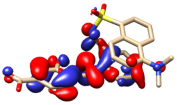 |  | (84%) |
| 223.7 | (0.18510) | HOMO-4 → LUMO+1 HOMO → LUMO+2 HOMO-4 → LUMO HOMO-3 → LUMO+1 HOMO → LUMO+4 | 27.0% 25.1% 6.5% 5.7% 5.4% |  |  | (42%) |
 |  | (33%) | ||||
| Experimental a | Theoretical a | Normal Vibrational Mode Assignment a |
|---|---|---|
| 1145 | 1109 | O=S=O symm stretch |
| 1317 | 1303 | O=S=O asymm stretch + N-H bending + CH2 bending |
| 1412 | 1377 | C-O-H bending (phenolic ring) |
| 1613 | 1642 | N=C stretch |
| 1686 | 1796 | C=O stretch (COOH group) |
| 3283 | 3204 | O-H stretch (phenol) |
| Experimental a | Theoretical a | Normal Vibrational Mode Assignment a |
|---|---|---|
| 1142 | 1113 | O=S=O symm stretch + ring C-H bending (aniline + dansyl) |
| 1310 | 1310 | O=S=O asymm stretch + N-H bending (aniline) + CH2 twist (aniline) |
| 1630 | 1601, 1624 | NH2 bending (aniline) + C=C asymm stretch (aniline) |
| 3323 | 3367 | N-H stretch (aniline) |
| 3383 | 3389 | NH2 symm stretch (aniline) |
| 3470 | 3484 | NH2 asymm stretch (aniline) |
| Species | ΔG Ksv kJ mol−1 | Kb FL M−1 | Kb UV-Vis M−1 | Ksv 293 K M−1 | Ksv 303 K M−1 | Ksv 313 K M−1 |
|---|---|---|---|---|---|---|
| Cu2+ | −22.19 | 7190 | 8459 | 9010 | 7650 | 6420 |
| CuO NPs | −22.41 | - | - | 9840 | 8470 | 6920 |
Publisher’s Note: MDPI stays neutral with regard to jurisdictional claims in published maps and institutional affiliations. |
© 2022 by the authors. Licensee MDPI, Basel, Switzerland. This article is an open access article distributed under the terms and conditions of the Creative Commons Attribution (CC BY) license (https://creativecommons.org/licenses/by/4.0/).
Share and Cite
Sanmartín-Matalobos, J.; Bermejo-Barrera, P.; Pérez-Juste, I.; Fondo, M.; García-Deibe, A.M.; Alves-Iglesias, Y. Experimental and Computational Studies on the Interaction of a Dansyl-Based Fluorescent Schiff Base Ligand with Cu2+ Ions and CuO NPs. Int. J. Mol. Sci. 2022, 23, 11565. https://doi.org/10.3390/ijms231911565
Sanmartín-Matalobos J, Bermejo-Barrera P, Pérez-Juste I, Fondo M, García-Deibe AM, Alves-Iglesias Y. Experimental and Computational Studies on the Interaction of a Dansyl-Based Fluorescent Schiff Base Ligand with Cu2+ Ions and CuO NPs. International Journal of Molecular Sciences. 2022; 23(19):11565. https://doi.org/10.3390/ijms231911565
Chicago/Turabian StyleSanmartín-Matalobos, Jesús, Pilar Bermejo-Barrera, Ignacio Pérez-Juste, Matilde Fondo, Ana M. García-Deibe, and Yeneva Alves-Iglesias. 2022. "Experimental and Computational Studies on the Interaction of a Dansyl-Based Fluorescent Schiff Base Ligand with Cu2+ Ions and CuO NPs" International Journal of Molecular Sciences 23, no. 19: 11565. https://doi.org/10.3390/ijms231911565
APA StyleSanmartín-Matalobos, J., Bermejo-Barrera, P., Pérez-Juste, I., Fondo, M., García-Deibe, A. M., & Alves-Iglesias, Y. (2022). Experimental and Computational Studies on the Interaction of a Dansyl-Based Fluorescent Schiff Base Ligand with Cu2+ Ions and CuO NPs. International Journal of Molecular Sciences, 23(19), 11565. https://doi.org/10.3390/ijms231911565









